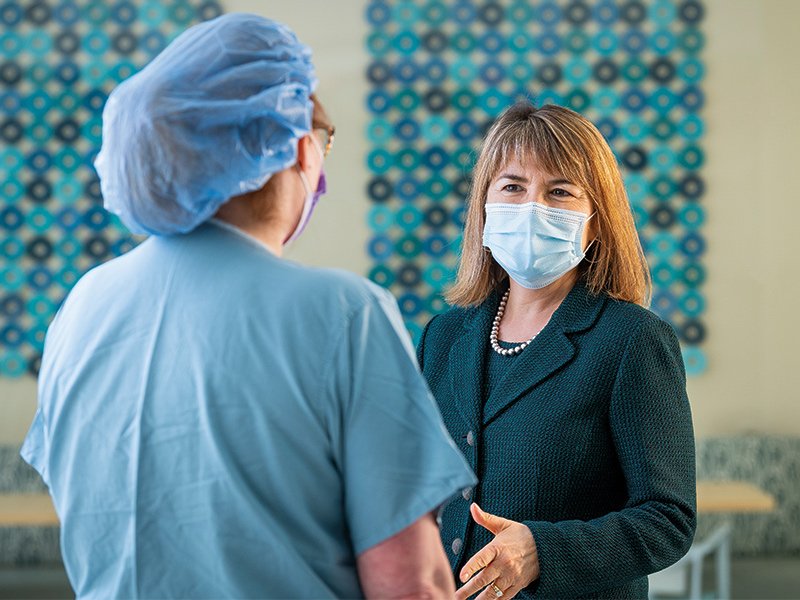New facilities will give community members the highest level of heart and vascular care
Building world-class cardiovascular care
Cone Health is strengthening the network of care for heart and vascular patients, with doctors, nurses, staff members and community partners working together to plan the future.
What do care providers intend the future to hold? Fewer heart attacks. Shorter hospital stays. More virtual and home-based visits. New technologies. A focus on prevention and wellness. And most importantly, world-class specialty care, right where we live.
“We have an opportunity to decrease the burden of heart disease in our community,” says Ruth Fisher, Cone Health’s vice president of heart and vascular services, imaging services and respiratory care. “With an outstanding team on board, we have the opportunity to push our commitment to prevention and help our community members improve their health. I’ve never seen such a perfect opportunity in my career.”
Fisher, who came from the Henry Ford Health System in the Detroit area in April 2019, chose Cone Health, in part, because of its reputation in cardiovascular care and what she believes is an “amazing team of physicians and caregivers”. The team’s groundbreaking work is one of the reasons people with cardiovascular disease are living longer, fuller lives.
“Thirty years ago, if you came to the hospital with a heart attack your chances of not surviving were almost twice as high as they are now,” Fisher says. “This drastic reduction in mortality is due in part to technologies and treatment protocols that were pioneered by the cardiovascular team at Moses Cone Hospital.”
Patients are living better lives, too. Advances in technology have reduced the amount of time people spend in the hospital, according to Fisher. Because of that, Cone Health’s continuum-of-care model is moving many hospital-based services to outpatient care.
“We’re bridging the gap between in-patient hospital and outpatient office visits — what we call continuum of care — so that no matter where you experience our services, we know you and we partner with you to improve your health,” she says. “That takes intentional work.”
Take, for example, the Cone Health initiative CTA First. Patients with stable chest pain can have a CT scan to determine if they have coronary artery disease. This non-invasive test can avoid further testing and, often, a heart catheterization and hospitalization.
“Our prevention work is light years ahead of many other places,” Fisher says. “We're much more efficient now in how we diagnose patients, and how we treat them. Conducting high-level heart scanning much earlier helps us determine whether there is disease and if so, how far along it has progressed,” she says.
As Cone Health launches a capital plan to grow its new heart and vascular network — with an expansion at Alamance Regional Medical Center followed by a new complex on the Moses H. Cone Memorial Hospital campus — much thought is being given to a variety of preventative measures that can improve heart health outcomes. In addition to initiatives like CTA First, that means learning where patients live in proximity to care, whether they can access healthy food, whether they understand the best exercises for heart health, and whether they’re at risk for blockages in the veins and arteries.
Unfortunately, vascular disease is prominent in our region, according to Fisher. For that reason, the new ambulatory center will include a wound and deep vein thrombosis (DVT) center that will focus on limb preservation — salvaging limbs rather than amputating them.
Cone Health has a unique opportunity to build on its legacy of leadership in cardiovascular because of its well trained physicians and its culture of teamwork, Fisher says. The vascular surgeons, cardiovascular surgeons and cardiologists work as a team with nursing and support staff to deliver the best patient care available.
“That benefits the patients and the program. This is a community that wants the best and we have the opportunity to provide the best heart and vascular care in the region. Philanthropy will help us do that.”

